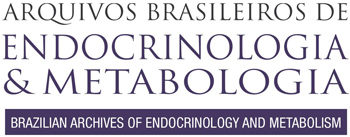Oncogenic osteomalacia is a paraneoplastic syndrome usually induced by bone or soft tissue tumors. It is presented by the development of pain and fractures with hypophosphatemia, hyperphosphaturia, and inappropriate normal/low plasma 1,25(OH)2D3 concentration. After the removal of the tumor the complete resolution of all biochemical and clinical abnormalities is the main characteristic. A case of a 44-year-old female with difficulty in walking due to leg pain and generalized muscle weakness and hypophosphatemia, with relative hyperphosphaturia, is described. A whole-body 99mTc-sestamibi scintigraphy showed accumulation in the left thigh region, and a small tumor was detected by ultrasound examination. By removal of the tumor, a lipoma, the symptoms improved significantly after a month, with complete recovery by the fourth month. In this case, 99mTc-sestamibi scintigraphy was useful in identifying the location of the tumor, which caused oncogenic osteomalacia.
Mesenchymal tumor; 99mTc-sestamibi; Oncogenic osteomalacia; Hypophosphatemia; Nuclear medicine; Lipoma



